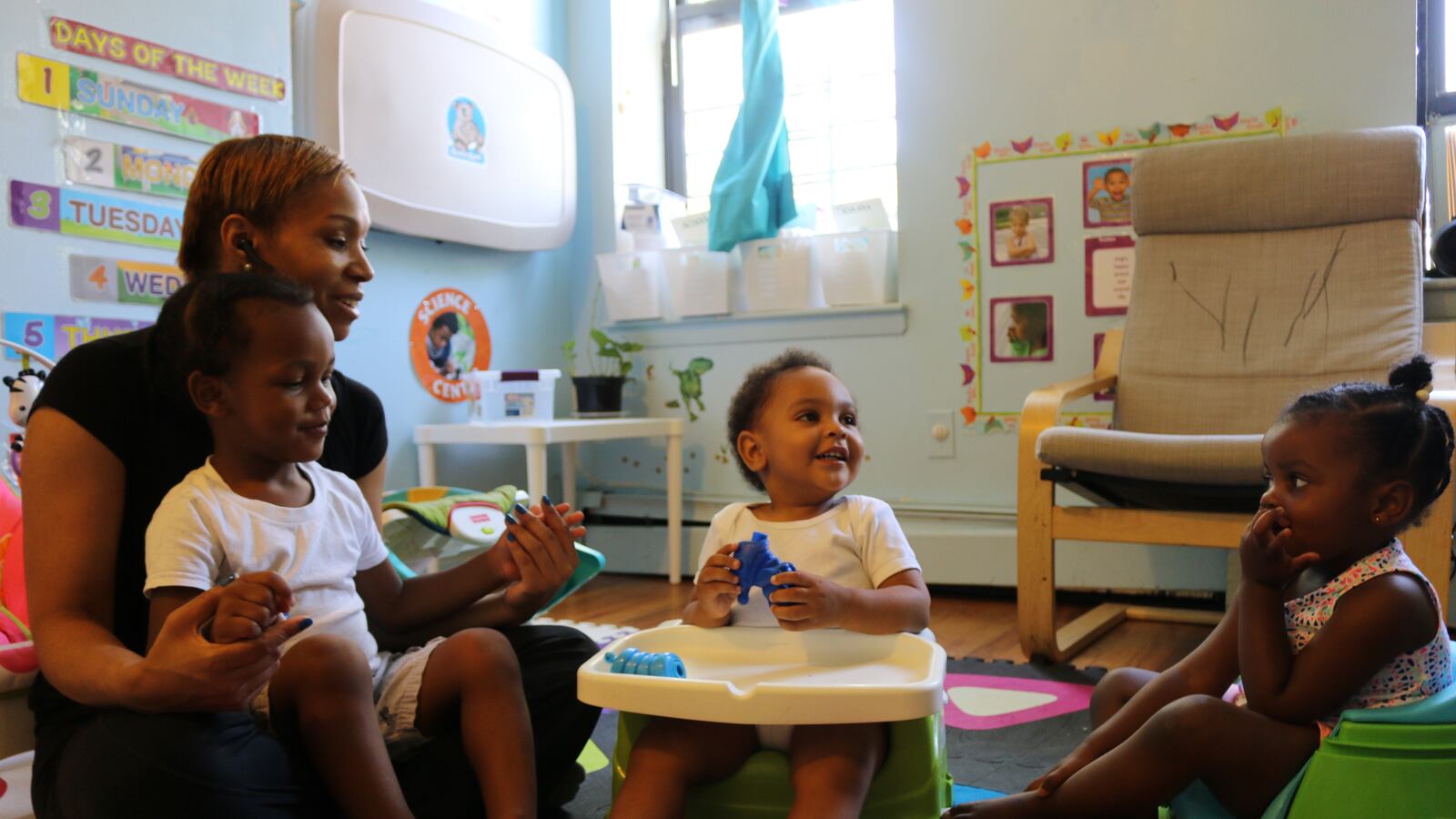One little girl would simply repeat anything that was said to her, rather than answer basic questions like, “How are you?” Another toddler seemed more active than the other children — maybe too active. But Sherease Alston, who has run a child care center from her living room for the past six years, was often met with skepticism when she would share her observations with parents.
The hard part isn’t noticing when a child may have a developmental issue, she explained. It’s getting the child’s parents to recognize it, too.
“It’s hard for parents to see sometimes because they’re in denial,” she said.
A cold call from a leading education school helped change that. With the help of the new Guttman Center for Early Care and Education at the Bank Street College of Education, Alston came up with a strategy to help parents see what she sees. Now, she asks them to log their children’s behavior at home, so those logs can be compared against ones kept by the daycare, Little Minds at Work.
“It was easy to see once it was all documented,” Alston said. “It was an easy tool to use to open that door for our parents.”
New York City is in the midst of a massive push to expand access to early childhood education — and to make sure quality keeps up. Site evaluations and teacher training have been a centerpiece of the city’s free pre-K program, which now serves 70,000 4-year-olds and is expanding to enroll 3-year-olds, too.
The city is slated to bring its pre-K model to children as young as six weeks old, with plans to transfer responsibility for publicly funded childcare programs from the Administration for Children’s Services to the education department. Making that shift will require the city to turn its attention to a vast network of providers like Alston — those who are already working with infants and toddlers in their communities.
That’s where the Guttman Center is focusing its attention. Working with providers on the ground in low-income neighborhoods, the Center wants to help them solve problems and improve their care.
“We really wanted … to have the input of the community, acknowledge the exceptional range of abilities that already exists, and partner with them,” said Director Robin Hancock. “The beauty of having all these perspectives in the classroom is people are constantly hearing from other corners in the field.”
Across the country, early childhood advocates have taken a similar approach, working to meet providers where they are — and build on their strengths. In Colorado, for example, community organizations have trained the aunts, neighbors and other caregivers who form an often invisible network of care. The state has also paid special attention to helping Spanish-speaking providers earn early childhood credentials.
In New York City, the scale of the challenge is huge. ACS currently oversees programs that serve about 20,000 children ages 3 or younger. A recent report by the New School’s Center for New York City Affairs found that home-based providers especially struggle with a labyrinth of safety and compliance requirements, understanding what is developmentally appropriate for very young children, and enduring long hours for low pay.
Guttman’s work represents one step in helping child care workers navigate those issues. The first cohort of providers was drawn from East New York — one of two neighborhoods (along with the South Bronx) where the city is launching its pilot for free pre-K for 3-year-olds this fall. The Guttman program was created for even younger children, from infants to 2-year-olds.
Providers meet on Saturdays every other week for a semester, and coursework centers on topics like building partnerships with families and caring relationships with students. Group discussions are paired with on-site coaching.
“The goal really is for them to be able to look at their own practice and to understand what’s working and what is not,” said Margie Brickley, a program director for the Bank Street Graduate School of Education, who helped develop the Guttman curriculum.
Ultimately, the program hopes to create a community of support for providers who often find themselves working in isolation. Already, some have opened up their sites to visits from other providers to observe good practices in action and share ideas.
“The first 36 months of life are critical for cognitive development and we’re building the foundation for learning,” said Johannah Chase, then an associate dean at Bank Street. “It’s part of the reason why we’re putting so much of our energy into child caregivers.”

On a recent morning at Little Minds at Work, five squirmy toddlers and an infant gathered on a rug made of giant foam puzzle pieces. Sunlight streamed in through two windows facing a quiet residential street. The group sang about their feelings and assistant Vanesha Mayers playfully wiggled one boy’s fingers and toes as they counted to 20.
Before joining the Guttman program, Alston said she took a more academic approach to working with the very young children in her care — which often led to frustration for both her and the kids. Guttman helped her refocus her curriculum around play and building relationships.
“That was an eye-opener,” she said. “They helped me understand their needs.”
Brickley said Alston’s struggle is common. Often, providers simply “water down” programs meant for older children even though infants and toddlers have very different needs.
On the other hand, Alston said she is adept at juggling the business and regulatory aspects of her business — something she can help other providers learn.
Hancock, the center’s director, said the program was built to recognize providers’ different abilities and fill gaps as needed. That tailored approach respects the knowledge providers already bring to the table, she said, and helps create a culture of trust.
“We really want to make sure to help providers build confidence that they are experts,” she said. “They know their environments and they know their children best.”
Correction: This post has been updated with the correct spelling of Johannah Chase’s name.

